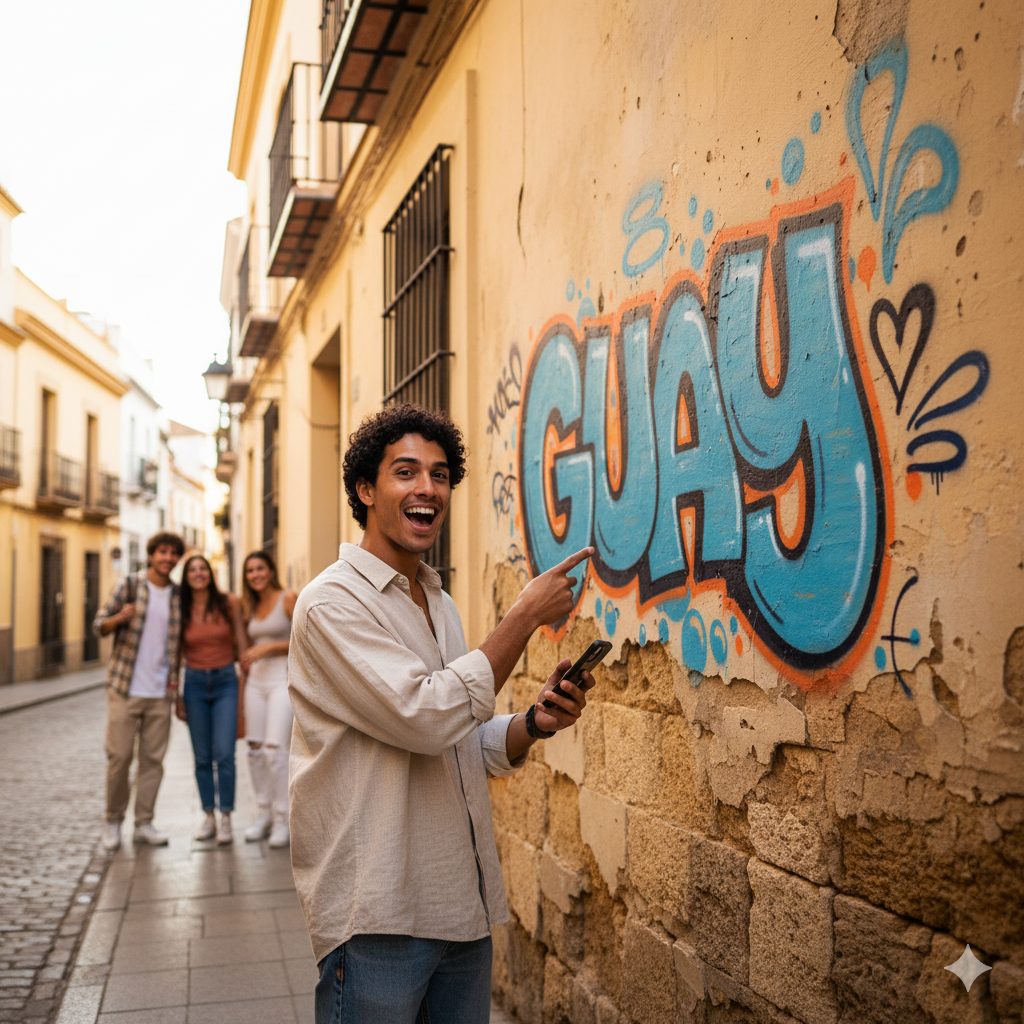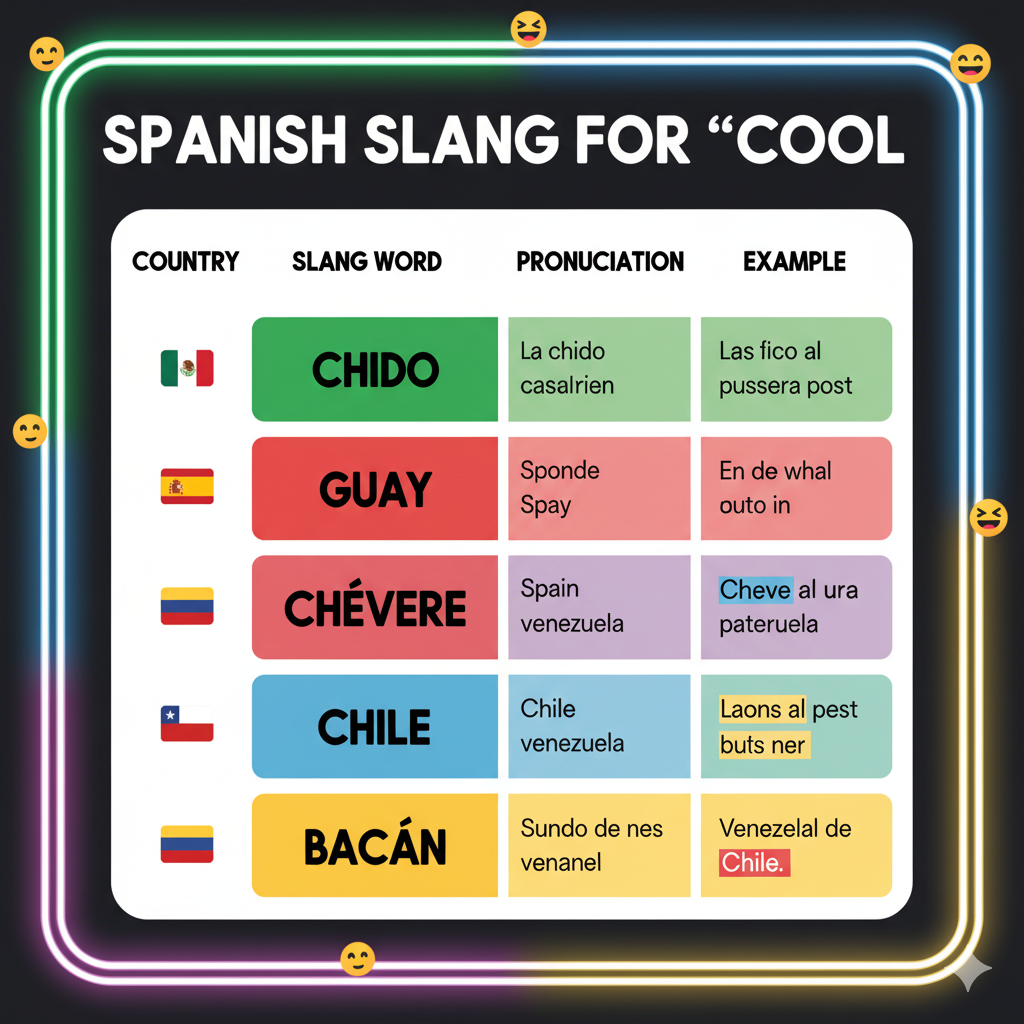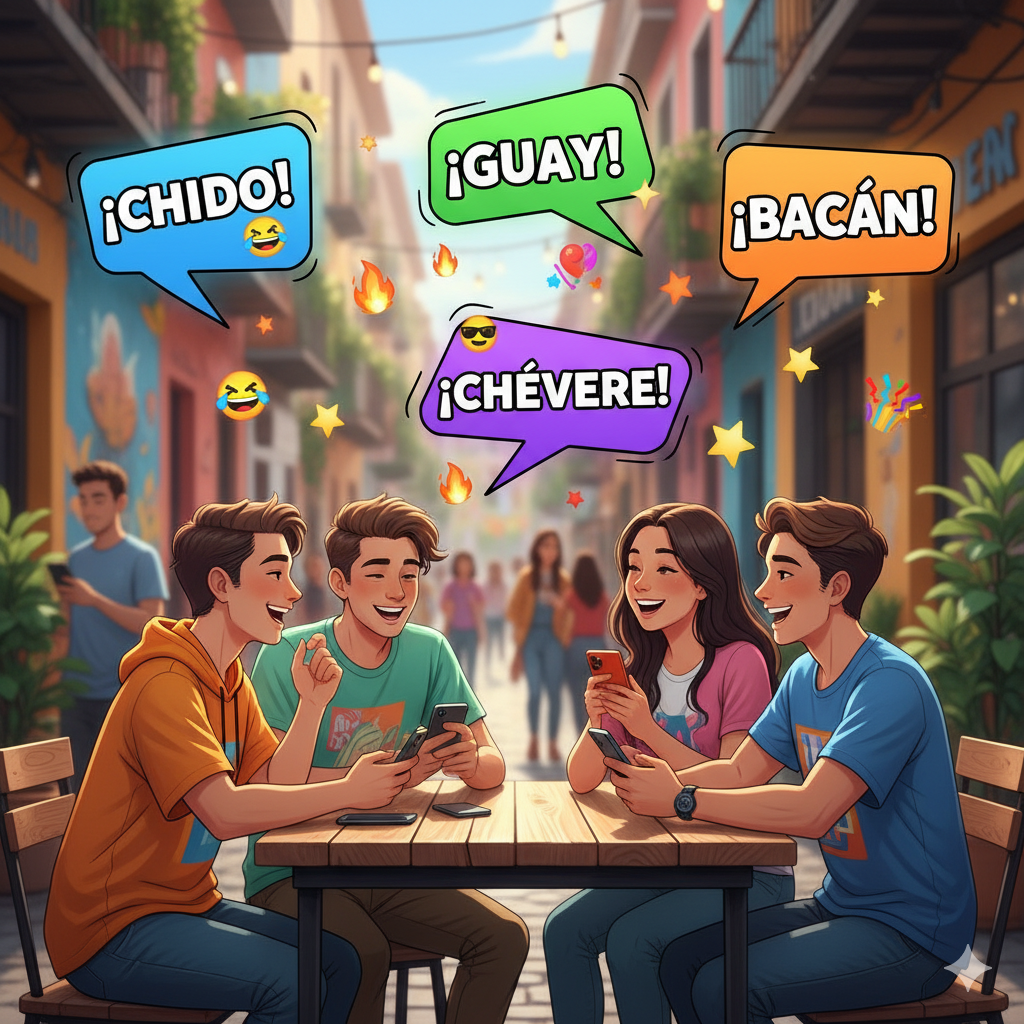In Spanish, just like in English, there are countless ways to say something is cool, awesome, or great. However, slang can vary depending on the country, region, or age group. Understanding Spanish slang not only helps you sound natural but also allows you to connect with native speakers in a more authentic way.
Whether you’re traveling in Latin America, chatting online with friends, or learning Spanish for work or school, knowing how to express that something is “cool” in a culturally relevant way makes your Spanish more lively and engaging.
Common Ways to Say “Cool” in Spanish
Spanish slang differs significantly by region. Here’s a detailed guide to the most commonly used slang words for “cool”:

1. Chido / Chida (Mexico)
Meaning: Cool, awesome
Pronunciation: chee-doh / chee-dah
Example:
“¡Tu carro está bien chido!” → “Your car is really cool!”
2. Guay (Spain)
- Meaning: Cool, great
- Pronunciation: gwhy
- Example:
- “Ese concierto estuvo guay.” → “That concert was cool.”
- Usage Tip: Versatile, can describe objects, events, or ideas. Common among teens and adults.
3. Bacán / Bacana (Chile, Peru, Colombia, Ecuador)
- Meaning: Cool, awesome
- Pronunciation: bah-kahn / bah-kah-nah
- Example:
- “¡Qué bacán tu mochila nueva!” → “Your new backpack is so cool!”
- Usage Tip: Friendly tone, often expressing admiration.
4. Padrísimo / Padre (Mexico)
- Meaning: Cool, awesome
- Pronunciation: pah-dree-see-moh / pah-dreh
- Example:
- “Esa fiesta estuvo padrísima.” → “That party was awesome!”
- Usage Tip: Padrísimo is a stronger, more enthusiastic form than padre.
5. Chévere / Chevere (Venezuela, Colombia, Puerto Rico, Caribbean)
- Meaning: Cool, fantastic, great
- Pronunciation: cheh-veh-reh
- Example:
- “¡Tu dibujo está chévere!” → “Your drawing is really cool!”
- Usage Tip: Widely understood across Latin America; can describe events, objects, or people.
6. Top (Modern, informal)
- Meaning: Cool, excellent
- Pronunciation: top
- Example:
- “Tu look de hoy está top.” → “Your outfit today is cool.”
- Usage Tip: Common on social media, particularly among younger generations.
7. Mola (Spain)
- Meaning: It’s cool, it rocks
- Pronunciation: moh-lah
- Example:
- “Este juego mola mucho.” → “This game is really cool.”
- Usage Tip: Casual, informal; widely used among teens and young adults.
Country-Specific Spanish Slang Table

| Country | Slang Word(s) | Meaning | Example |
|---|---|---|---|
| Mexico | chido / chida | Cool, awesome | “Tu camisa está chida.” |
| Mexico | padrísimo | Very cool, awesome | “La fiesta estuvo padrísima.” |
| Spain | guay | Cool, great | “Ese concierto estuvo guay.” |
| Spain | mola | It rocks, it’s cool | “El videojuego mola.” |
| Chile / Peru / Colombia / Ecuador | bacán / bacana | Cool, awesome | “Tu mochila es bacán.” |
| Venezuela / Colombia / Puerto Rico / Caribbean | chévere | Cool, fantastic | “La película estuvo chévere.” |
| Latin America / Modern slang | top | Cool, excellent | “Tu outfit está top.” |
How to Use “Cool” in Spanish Slang
Regional Differences
Slang varies by country, and using the correct term for your audience is crucial. For example:
Mexico: chido, padrísimo
Spain: guay, mola
Caribbean / Northern South America: chévere
Chile / Peru: bacán
Knowing the region ensures your slang sounds natural and not forced.
Age and Context
- Younger Generations: Likely to use casual slang like chido, guay, or top.
- Older Speakers: Prefer standard words like genial, fantástico, or increíble.
Slang is informal and should not be used in professional or academic settings.
Formal vs Informal Usage Tips
| Context | Recommended Usage |
|---|---|
| Texting / Social Media | Any slang word (chévere, guay, chido) |
| Conversing with Friends | Informal slang is ideal |
| Professional / Academic | Use standard terms like fantástico, excelente, or increíble |
| Traveling / Casual Interaction | Match slang with local usage to avoid confusion |
Related Spanish Expressions
In addition to slang, these informal expressions convey “cool” or “awesome”:
Está de lujo → “It’s luxurious / awesome”
Está increíble → “It’s incredible”
Está buenísimo → “It’s really good / cool”
Está fenomenal → “It’s phenomenal / amazing”
These expressions are widely understood and can be used in less casual contexts.
Trending Slang Words
Spanish slang evolves quickly. Some modern slang for “cool” includes:

Brutal → Amazing, very cool (used in Spain and some Latin American countries)
“La fiesta estuvo brutal.” → “The party was amazing.”
- “Ese tipo está fresco.” → “That guy is cool/chill.”
- “Tu nuevo celular está de lujo.” → “Your new phone is awesome.”
Keeping up with these words helps learners stay current with modern Spanish slang.
Examples of “Cool” in Conversations
1. Talking About a Party
“La fiesta de Juan estuvo padrísima. Todos se divirtieron mucho.”→ “Juan’s party was awesome. Everyone had a lot of fun.”
2. Commenting on Social Media
- “¡Tu foto está chévere! Me encanta el fondo.”
→ “Your photo is cool! I love the background.”
3. Discussing a New Gadget
- “Este celular es top. La cámara es increíble.”
→ “This phone is cool. The camera is amazing.”
4. Gaming Context
- “El nuevo juego de carreras mola mucho. Las pistas son geniales.”
→ “The new racing game is cool. The tracks are awesome.”
FAQ About Saying “Cool” in Spanish
Q1: What’s the most universal slang word for “cool” in Spanish?
Chévere is widely recognized in Latin America, while guay is common in Spain.
Q2: Can slang be used in writing?
- Yes, but mostly in informal writing like texts, blogs, or social media posts. Avoid in formal documents.
Q3: Are there gendered forms of “cool”?
- Yes. Many adjectives like chido/chida or bacán/bacana change depending on the gender of the noun.
Q4: Can I mix slang from different countries?
- Yes, but it may confuse some native speakers. Stick to local slang if possible.
Q5: How is “cool” different from “awesome” in Spanish slang?
- Words like padrísimo, chévere, or bacán can mean both “cool” and “awesome” depending on context.
Engagement Tips
Practice with Native Speakers: Try using slang in conversations or language exchange apps.
Social Media Observation: Watch Spanish-speaking influencers and notice slang usage.
Interactive Exercises: Create mini quizzes to match slang words to their meanings.
Role-Playing: Use slang in real-life scenarios like ordering food, attending parties, or describing experiences.
Conclusion
Saying “cool” in Spanish slang varies by country, age, and context. From chido in Mexico to guay in Spain, using the correct word makes your Spanish sound authentic and lively. Learning Spanish slang is fun, practical, and culturally enriching, helping you connect with native speakers, understand informal conversations, and navigate social media naturally.
By mastering cool in Spanish slang, you improve your fluency, sound confident in casual situations, and stay in tune with evolving digital culture.
David is the creative mind behind jokes Crafter, a hub for clever jokes, witty wordplay, and laugh-out-loud content. With a passion for humor and a knack for crafting the perfect punchline, David brings smiles to readers across the globe. When he's not writing, he's probably thinking up his next viral joke or enjoying a good comedy show.














